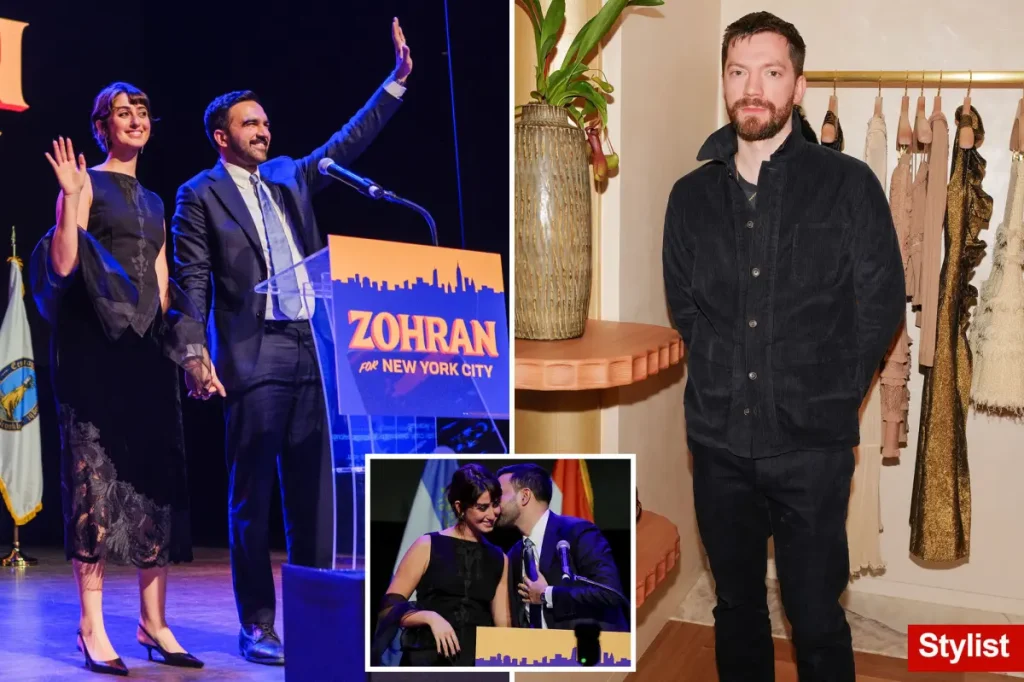Mamdani and Fashion: The Stylish Side of New York’s Mayor-Elect
In an interesting blend of politics and fashion, New York City Mayor-elect Zohran Mamdani reportedly sought professional styling advice during his successful campaign. According to Puck, the 34-year-old Democratic socialist worked with Bailey Moon, a fashion stylist whose client roster includes notable names like Diane Lane, Pamela Anderson, and even former First Lady Jill Biden. This collaboration reveals a thoughtful approach to his public image as he campaigned throughout the city. His artist wife, Rama Duwaji, 28, also reportedly received styling guidance, though she largely remained out of the campaign spotlight. This attention to appearance adds an intriguing dimension to a campaign that focused heavily on affordability and accessibility for everyday New Yorkers.
The revelation has raised some eyebrows, particularly given Mamdani’s political identity as a Democratic socialist who campaigned vigorously on making New York City more affordable for its residents. Throughout his campaign, Mamdani, who currently earns $142,000 annually as a Queens state assemblyman, was consistently seen in professional attire, typically some variation of a suit and tie. This polished appearance became something of a signature look as he connected with voters across the five boroughs. While the details regarding the cost of Moon’s styling services and who covered those expenses remain unclear, the partnership highlights the complex relationship between progressive politics and personal presentation in the modern political landscape.
Bailey Moon brings considerable fashion credibility to this political partnership. Beyond his work with Hollywood stars like Diane Lane and Pamela Anderson, Moon has experience in the political arena, having worked with prominent Democratic figures including Jill Biden and 2024 vice presidential candidate Governor Tim Walz. This crossover between entertainment and politics is increasingly common as public figures recognize the importance of visual communication in connecting with audiences. For Mamdani, maintaining a consistent, professional appearance likely served as a visual reinforcement of his readiness to lead America’s largest city, even as he advocated for policies that challenge the status quo.
The styling choices extended to Mamdani’s election victory celebration as well, where his consistent suited appearance continued to reinforce his polished political image. Meanwhile, Duwaji, the incoming First Lady of New York City, made her own fashion statement at the event by wearing a black square-necked piece designed by Zeid Hijazi, a Palestinian-Jordanian designer. This choice of attire could be seen as both a personal style preference and potentially a subtle statement aligned with the couple’s political values. The thoughtful selection of clothing for such a significant moment demonstrates an understanding of how fashion choices can communicate messages beyond words, particularly for public figures stepping into highly visible roles.
The story of Mamdani’s styling collaboration offers an interesting lens through which to view modern progressive politics. Critics might view the engagement of a high-end fashion stylist as contradictory to democratic socialist values, perhaps explaining the “champagne socialist” label mentioned in the report. However, others might argue that effective political leadership in the 21st century requires a strategic approach to public image, regardless of ideological positioning. For Mamdani, who successfully connected with diverse constituencies across New York City, professional styling could be viewed as an investment in effective communication rather than a personal indulgence.
As Mamdani prepares to take office as New York City’s mayor, it remains unclear whether he and Duwaji will continue working with professional stylists. What is clear, however, is that their approach to public appearance represents a thoughtful consideration of how visual presentation influences political communication. In an era where politics and culture increasingly intersect, and where a politician’s image can be scrutinized across countless social media platforms, the strategic consideration of fashion may be less about personal vanity and more about effective leadership. For New Yorkers watching their new mayor take office, the substance of Mamdani’s policies will ultimately matter more than his suits—but his attention to both suggests a leader who understands the multifaceted nature of modern political engagement.


